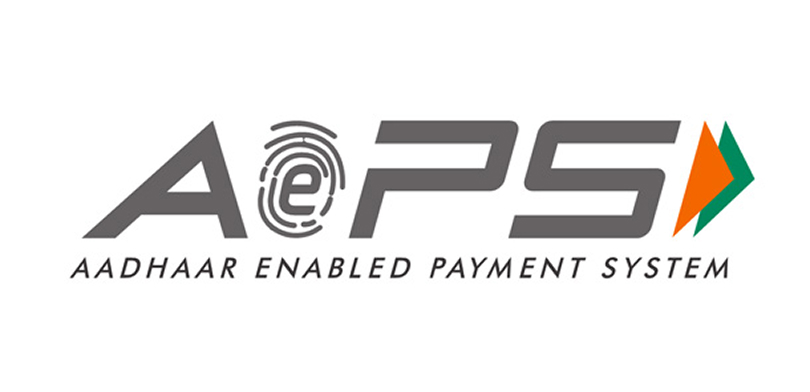The National Payments Corporation of India’s (NPCI) digital payment system – Aadhaar Enabled Payment System or AePS is a bank-led model that allows the customers to complete banking transactions through their Aadhaar number and biometric authentication. While developing the AePS system, the authorities have prioritised safety and security of the transactions and users’ data. Therefore, AePS transactions security guarantees that all private data is encrypted at transmission and storage stage.
So, how does AePS ensure that the data is not accessed or hacked by unauthorised users? To find these answers, let us understand the advanced security features of Aadhaar Enabled Payment System.
Understanding AePS transactions
Being part of the Digital India agenda, the Aadhaar Enabled Payment System seeks to improve the reach of cashless transactions and promote financial inclusion throughout the nation. AePS enables a bank customer to access their specific Aadhaar-enabled bank account using their Aadhaar number and carry out standard banking services. Under AePS, a user needs to make three inputs – bank name, Aadhaar number and biometric details as captured by the user at the time of enrolment. AePS is vital to foster financial inclusivity in India, as its impact is quite effective particularly in rural areas where digital literacy is not very common. Through AePS, the users can make cash deposits and withdrawals, interbank or intrabank fund transfers, check account balance, and get a mini statement with the help of the business agent.
The services provided by AePS are –
- Cash deposit banking services
- Mini statement for cash withdrawal balance inquiry
- Fund transfer from Aadhaar to Aadhaar with dual authentication
- Aadhaar Pay for BHIM
- eKYC
- Best demo for finger detection authorization tokenization
- Authentication status of Aadhaar seeding
What makes Aadhaar Enabled Payment System transactions safe and secure?
This system enables an authentication gateway for all Aadhaar-linked account holders, allowing it to handle both ONUS and OFFUS requests efficiently and effectively. Customers must link their bank account and Aadhar card in order to access this service. They can view their account balance there as well after linking their Aadhar card. You don’t need a debit card or a cell phone to conduct AEPS transactions.
Other than Aadhaar number, biometric authentication provides an additional degree of protection. The customer’s fingerprint is used for biometric authentication to confirm their identification. Since fingerprints are unique and it is difficult to copy them, it guarantees that transactions can only be carried out by those who are authorized. With Aadhaar and biometric authentication, illegal access and fraud in AePS transactions security are taken care of.
Additionally, the Reserve Bank of India has established stringent security standards that the AePS system has to follow. Banks and other financial institutions have to follow rules issued by the RBI at the time of putting digital payment systems into place. These rules lay out best practices that the system providers need to follow, thus guaranteeing the system satisfies specific security requirements. There are various security levels that are built into the AePS system, including stringent regulations, biometric authentication and cutting-edge encryption technologies.
However, there have been concerns about the lack of two-factor authentication, which may pose vulnerabilities for certain users. Recently, the Reserve Bank of India has announced its plans to improve and strengthen the security measures for the Aadhaar-enabled payment system (AePS) to combat the risk of fraud. RBI plans to introduce additional mechanisms, such as timed One-Time Password authentication. It is crucial for the authorities to make sure that AePS transaction security is strengthened from time to time.
Tips to safeguard against unauthorised transactions using AePS
The AePS user must be alert while making the transaction. There are best practices that one must follow to prevent fraudulent transactions in the AePS. Some of the key points to remember are –
- Your Aadhaar number and other details must be kept private and should never be shared with anyone when you make use of AePS services.
- Make sure that you visit only trustworthy AePS providers and secure channels to make transactions.
- Keep a regular track of the history of your AePS transactions.
- When you suspect any irregular activity, do not miss out on informing the bank or concerned authorities about it.
- Practice biometric authentication and secure PINs to ensure AePS transactions security
- Don’t keep obvious passwords and keep changing them regularly.
- Turn on real-time notifications and email or SMS alerts for transactions, so that you can be alert about them well within time. This will bring down the possibility of illegal transactions.
In conclusion
Using their Aadhaar number and fingerprints, the Aadhaar Enabled Payment System enables the users to easily and securely conduct basic money transactions and access financial services. Since it is accessible by the 140 million people of India, AePS agents need to comply with the stringent guidelines as recommended by the Reserve Bank of India to protect transactions and stop fraud. This makes AePS transactions security trustworthy for consumers who can rely on the system to meet their money-related requirements. With advanced security features, AePS is not just a means of payment, but a safe and trustworthy instrument.
Religare Digital is now a family of 50,000+ agents, committed to delivering hassle-free e-Governance services such as money transfers, AEPS, insurance, loans, bill payments, ticket bookings, digital signatures, PAN, TAN, investment products and more—all from one shop. Join our pan-India network for a reliable and secure business opportunity.


